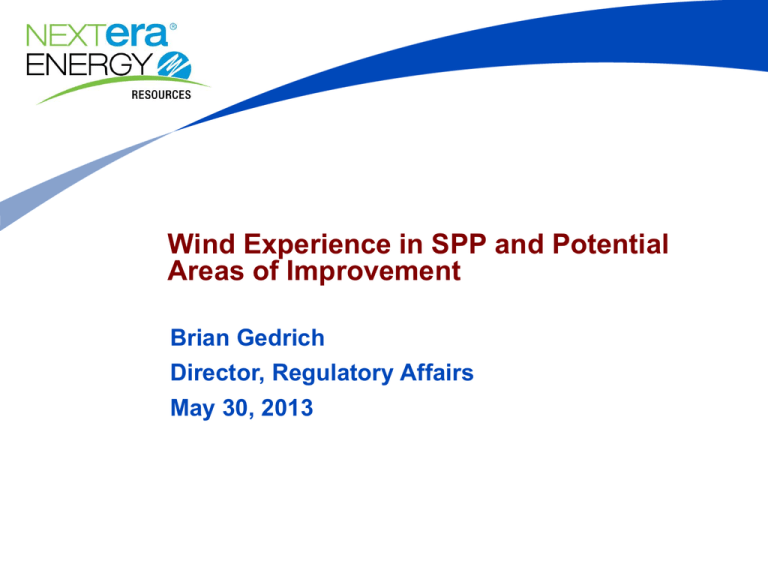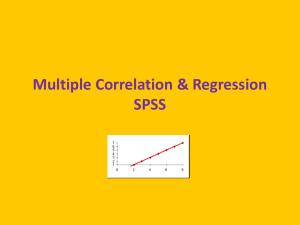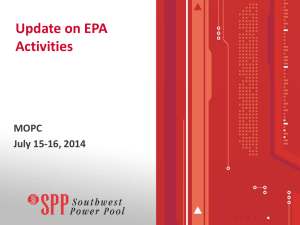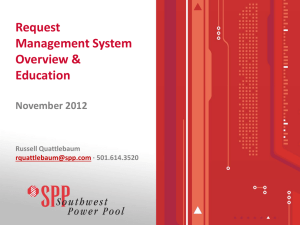SPP Wind Workshop BG v3 NextEra
advertisement

Wind Experience in SPP and Potential Areas of Improvement Brian Gedrich Director, Regulatory Affairs May 30, 2013 With well over 10,000 MWs, NextEra Energy Resources, is the largest wind and solar generator in North America Over 1,300 MWs of Wind Generation in SPP •Need Mp 2 The extent and impact of the Spring 2013 curtailments were a surprise NextEra’s Experiences • Wind curtailments were chronic, unexpected and unpredictable – Generation interconnection studies did not indicate curtailment issues – There were a significant number of transmission outages – Loop flows and distant wind farms contributed to the constraints • It was difficult to recreate the curtailments through modeling – Operational system information is difficult to obtain – Actual line flows are not public – Real-time sub-regional wind totals are not available 3 NextEra is concerned about Fall 2013 when outage season begins again, but with even more wind operational Potential Areas for Improvement 1. Improve coordination of transmission outages 2. Constraint/flow-gate forecasting 3. Potential switching to limit loop flow and remote wind contributions to congestion 4. Improve wind assumptions used in generator interconnection studies 5. Increase transparency of operational transmission information 4 Potential Areas for Improvement – continued 1. Improve coordination of transmission outages – Increase the forward view of transmission outages TOs should attempt to increase scheduling lead time – Currently, minimum lead time for “planned "outages is 7 days and “discretionary” is 2 days SPP should not only show approved outages, but also outages that are in the review/approval process Facility de-ratings should also be made public – In high wind concentrations areas, consider moving transmission maintenance outages to peak May improve scheduling and maintenance costs for TOs – Allow SPP to consider economics, not just reliability, when coordinating transmission outages 5 Potential Areas for Improvement – continued 2. Constraint/flow-gate forecasting – SPP should provide transmission constraint/flow-gate forecasts and should attempt to identify seasonal areas of congestion Allows stakeholders to prepare and better manage congestion exposure Transmission constraint forecast will allow stakeholders time to bring forward ideas to mitigate congestion – Temporary Special Protective Schemes (SPS), or re-configurations, should be considered to reduce congestion SPS process needs to be shortened to allow for seasonal implementation Pre-emptive actions should be identified and considered 6 Potential Areas for Improvement – continued 3. Potential switching to limit loop flow and remote wind contributions to congestion – SPP should study ways to maximize SPP wind production Configurations to limit the impacts of wind on lower voltage transmission – Attempt to limit flows through lower voltage systems – Keep flows on the bulk system – SPP should attempt to identify configurations that could limit MISO and remote wind impacts Identify configurations that limit MISO’s loop flows – MISO wind is contributing to SPP’s congestion Identify configurations that will limit SPP wind impacts on SPP congested areas – Reduce impacts of remote wind on congestion 7 Potential Areas for Improvement – continued 4. Improve wind assumptions used in generator interconnection studies – The amount of wind modeled needs to be more realistic Currently: – Wind generator under study is modeled at 100% – Neighboring wind generators in the same area are modeled at 80% – Wind generators in other areas are modeled at 20% – Additional analysis should be performed with all wind at 80% – The higher wind results should be used for informational purposes and not result in additional upgrades – Wind generators and transmission owners need to fully understand the curtailment risk 8 Potential Areas for Improvement – continued 5. Increase transparency of operational transmission information – SPP should consider making additional operational data public: Key internal line flows Tie-line flows with SPP neighbors Sub-regional wind generation – SPP should provide after-the-fact operational load flow cases Provides transparency to the stakeholders Will help stakeholders understand the operational issues Due to the lack of operation data, it is difficult to understand what is happening and/or what is going to happen 9 This conference is a great first step – we need to build on this effort, plan and implement next steps, and make the necessary improvments Next Steps • We hope today’s workshop is the first step in the process, not the last – The issues identified today are not trivial and will take time to resolve – NextEra would request a stakeholder task force be formed to focus on the wind related issues identified today and in future issues which confront SPP • NextEra is committed to working with SPP and the stakeholders on developing and implementing new, better processes to mitigate curtailments 10











